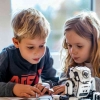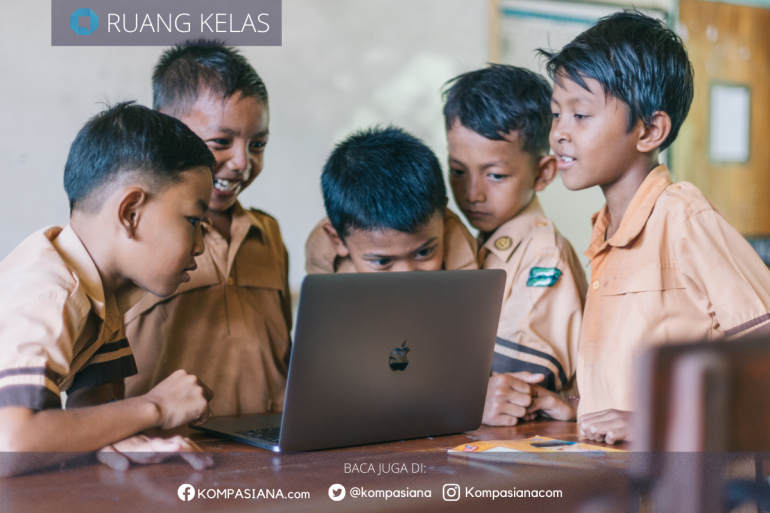The 1945 Constitution states "that the Indonesian nation must be smart, peaceful, independent, and fair" UUSPN number 20/2003 states that students must have competitiveness in facing the global. To realize this goal, learning is carried out through olahhati, OlaHthink, olahasa & olahraga. With this foundation, effective learning methods are needed to support better learning and continue to grow.
"When you say you are ready menempuh to study, then you must be ready to face change" is a phrase that I have read, then a good education is an education that is always adaptive and follows the development of existing knowledge. Participatory learning is considered as one of the learning methods that have flexibility and open nature can beone of the breakthroughs.
The fact that during the course of education that is woven for years but the learner or student is precisely determinedp as a subject that continues to be passive shows less effective results in other words the learning model that isg applied does not fully work and meet the needs of students. A paradigm that continues to run in Indonesia with learning centered on smarter people or teachers to their students with a pattern of teachers know-students do not know-teachers give-students receive-active teachers-passive students.
In some journals found the transition of learning modes transitioned from ordinaryapedagogy-based learning to participatory learning, for example in the Efektifitas Partisipasi Perempuan Pada Pendidikan Non Formal di Pusat Kegiatan Belajar Masyarakat (PKBM) Kecamatan Widerijaksa Kabupaten Pati the results of the effectiveness pof participatory learning that the education skills and skills women in PKBM Wedarijaksa provide positive changes to the formation of attitudes and behaviors which can be obtained from active activities followed by direct participation.
Participatory learning is learning that is rooted in tradcontent that has grown in the community since ancient times, in islam participatory learning has existed since the first known as deliberation inskusi and debate, it is also the background for the birth of a tradition that is participatory in the community, among others gotong royong, please help, help each other, this proves the value of the involvement of each individual in taking their role in society and has been applied and proven participatory learning in everyday life.
Participatory learning can be interpreted as an effort to include learning resources in learning activities. According to Carl R. Wieman, 2001 Nobel Laureate in physics "simply put, the idea behind Active Learning is that the brain needs to exercise continuously to form new neural connections, which strengthen decision-making and thus reorganize the brain.
Passive listening does not help the brain to exercise, actively thinking about explanations and the right or wrong path to follow" actively thinking about explanations and paths therefore the design designed for participatory learning should be centered and purposeful with points (1.) Learner-Centered (2.) Learning From Experience(3.) Goal Oriented (Goals Oriented). (4.) Menekankan Kerjasama (Cooperative Activities). Participatory learning urgens its relation to playing a central role in Adaptive Neural Networks.
The fact that supports less effective learning that does not involve students is also explained by the revival of interest in the existence of neural network research has raised problems to the surface about the problem of adaptation and learning therefore carried a learning model that has relevance to a lot of knowledge and human capabilities is evidenced through kelly's theoryof that revising beliefs is true can be caused byparticipatorylearning. In its continuity and the success of participatory learning according to Sudjana (1993) is realized in three stages, namely program planning (program planing), implementation( program implementation) and Research (program evaluation).
Participatory planning in the planning phase includes steps to identify learning needsand problems as well as problem priorities, available resources and potential barriers to be overcome. After that, the priorities of the needs to be achieved and the goals of the learning activities are determined. Implementation programs include learning materials, learning methods and techniques, assessments and tools and facilities, the time that learning residents spend in planning as they strive to develop implementation programs based on learning needs. Available resources and potential obstacles in the implementation of the program of learning activities.
In participatory learning participatory activities in the implementation phase of the program include activities that create a situation of learning activities in this context, the discipline of learning citizens in the presence and activity becomes very important. Encouraging relationships between learning residents and learning resources should be encouraged to create relationships that are both open, intimate and guided in the implementation of learning activities. Communicationbetween residents and learning sumber learning is carried out through horizontal relationships. This relationship describes a model of parallel communication and between learning citizens and learning resources and between learning citizens. The role of learning resources to help residents learn by carrying out learning activities that encourageeffective learning interactions can be improved if residents learn while carrying out learning activity programs.
Participation in the evaluation phase of the active learning program to be carried out collecting, processing and presenting information or data that can be used as input dnature of decision making. The evaluation is beneficial to the designer, implementation and development and study the results of the evaluation in a participatory way guided learning residents to present information baimed at supporting the implementation of Planning, results and effectiveness of active learning programs. Participatory evaluation is also useful for people who are learning to know the extent of the development of changes thatthey experience and achieve through participatory learning.











